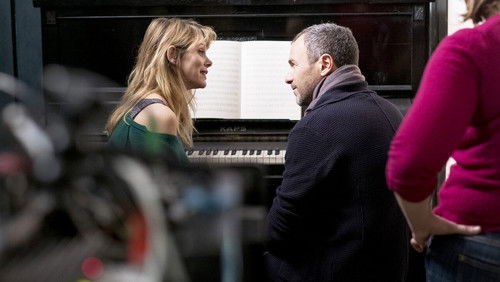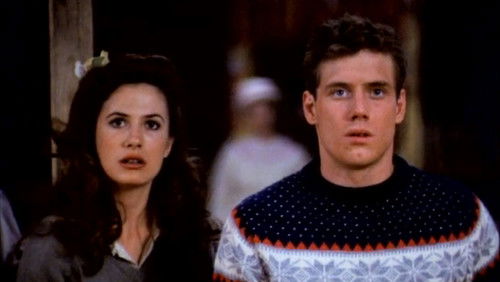Zum Beispiel Balthasar (1966)
33KZum Beispiel Balthasar: Directed by Robert Bresson. With Anne Wiazemsky, Walter Green, François Lafarge, Jean-Claude Guilbert. The story of a mistreated donkey and the people around him. A study on saintliness and a sister piece to Bresson’s Mouchette.
“The star of Au hasard Balthazar is a donkey, a trained animal that has been led, goaded, into what passes, in an animal sense, for a performance. Of course there is nothing new about this – animals have been stars since Rescued By Rover – yet there is something unique about the performance of the donkey in Au hasard Balthazar, something that strikes one sort of funny if one gets to thinking about it. It has to do with the approach of Robert Bresson, a director whose way of working with actors was, shall we say, unusual. An auteurist in the purest sense, Bresson believed, zealously it seems, that the director should be the sole creative force behind a film, the one person responsible for the movieu0026#39;s tone, its meaning. The problem with most movies, if you look at things in a Bressonian way, is that stubborn habit of actors to sometimes change the meaning, the texture of a scene by how they play it – that irksome tendency of actors to take the creative reins themselves, and slip things into scenes that arenu0026#39;t meant to be there. Bressonu0026#39;s solution to this problem? Rehearse your actors to death, make them do take-after-take until the words no longer mean anything to them, until they have lost the ability to be spontaneous anymore, to do anything but what their director tells them to – in short, break them like animals. The people in Bressonu0026#39;s films perform their actions with the same hollow, mechanical absence-of-will one perceives in a circus elephant rolling a ball, and this is exactly as Bresson wants it, for it allows him to carry out his cinematic plans without fear of their being subverted by an actor who has some contradictory notion in their head of what a scene is supposed to be about, who their character is. The human actors in Au hasard Balthazar, stripped of their emotional tools, their tricks, occupy exactly the same plane as the donkey Balthazar, who is, as they are, a trained animal, an element in a composition.u003cbr/u003eu003cbr/u003eThe first scenes are an idyll: the foal Balthazar, new-stripped from his motheru0026#39;s teat, becomes the favorite pet of a group of kids spending the summer together on a farm. This is a time for frolicking, for amorously carving names into benches – but alas the childish harmony is doomed soon to end. Bresson conveys the fleetingness of youth, cutting quickly through a series of tableaux depicting carelessness and joy slightly darkened by the presence of a sickly young girl; then without warning weu0026#39;re presented with the realities of grown-up existence, embodied most cruelly by the image of poor Balthazar, now grown, harnessed to a salt-wagon (salt having ironically been his favorite treat during his care-free younger days). Itu0026#39;s here that Bresson gives us an indication as to the donkeyu0026#39;s more-than-animal nature: Balthazar, having been mistreated, rebels against his owner, tips the wagon and, about to be set upon by a mob of men with pitch-forks, flees. Some instinct – or is it conscious will? – leads Balthazar back to the farm, which has been taken over by a former schoolteacher whose daughter, Marie, once one of Balthazaru0026#39;s playmates, still resides, her existence a lonely one. This would seem the beginning of a new happiness for Balthazar, but the donkeyu0026#39;s fate is alas still clouded with gloom. Marie becomes the object of the juvenile delinquent Gerardu0026#39;s amorous attentions; for obscure reasons the jaded miscreant is resentful of Balthazar, and avails himself of every opportunity to torture the poor beast.u003cbr/u003eu003cbr/u003eTenderness and cruelty live side-by-side in Au hasard Balthazar, and seem equally the product of an almost mindless instinct. Nowhere is this embodied more purely than in the character of Gerard (Francois Lafarge), the angry sadist who becomes Balthazaru0026#39;s chief tormentor. Gerard is capable of being gentle, as demonstrated by his wooing of the poor farm-girl Marie (the Pre-Raphaelite beauty Anne Wiazemsky), but heu0026#39;s equally capable of unfeeling viciousness, as when he ties a piece of newspaper to Balthazaru0026#39;s tail and sets it alight. Is Gerard a good person or a bad one? Does he hate Balthazar, does he love Marie? These questions seem of little concern to Bresson, who views human affairs in terms of irresistible internal forces. Bresson, in a mysterious, vaguely irreverent way, blurs the line between human and animal, brings human behavior into the animal world while elevating Balthazar to the quasi-human. Thereu0026#39;s an awareness to Balthazar thatu0026#39;s more than you would expect from your average quadruped, and itu0026#39;s through this hint of sentience that one begins seeing the saintly qualities in Balthazar, the patient endurance of hardship, the radiance of spirit.u003cbr/u003eu003cbr/u003eItu0026#39;s an amazingly delicate piece of work by Bresson, an audacious idea carried out with the utmost discretion and skill. Perhaps only Bresson among all filmmakers couldu0026#39;ve made this idea work, because only he had mastered the art of rendering existence nearly abstract while at the same time achieving powerful emotional effects. If the film were merely symbolist it would be irrelevant – Balthazar can of course be seen as a symbol for a lot of things, but it doesnu0026#39;t seem right to reduce him to some emblem of suffering, some Christ-like trope. Balthazar is above all a character, a protagonist in a drama, but of course in Bresson there is never any sense of conventional drama, of easy emotion. As a storyteller Bresson was efficient but patient – his scenes never go on longer than they need to, yet you wouldnu0026#39;t call the pacing urgent. Thereu0026#39;s something about Bressonu0026#39;s cutting that keeps the story flowing briskly while never engendering a sense of hurry. He moves from one character to another, one situation to another, with an unfussy ease that shames most conventional directors with their dependence on transitions, devices and segues. The filmu0026#39;s very pace helps convey Balthazaru0026#39;s saintly nature, his perseverance. Itu0026#39;s a work at once touching, bold, enigmatic and stirringly human.”









